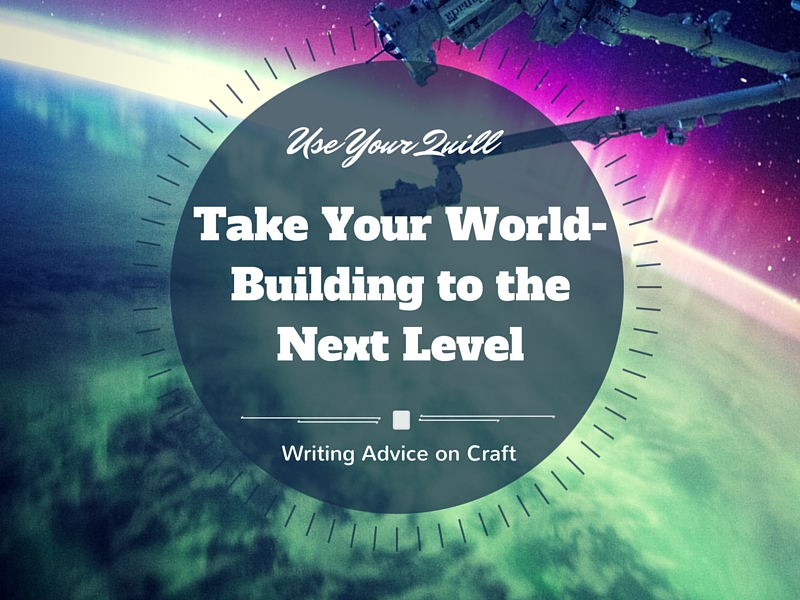World-building is an essential part of writing any novel, be it fantasy, sci-fi, or even realistic fiction. The world which your characters inhabit must come alive for the reader in order to be believable and compelling. And it’s clear when a novel has succeeded in creating a living, breathing world—how many times have you heard someone wish they could live at Hogwarts?
So you’ve done the basics—you’ve developed a world for your characters and story to inhabit, filled with its own rules and unique details. But how do you make sure the world will exist vividly for the reader? How do you take it a step further to ensure yours is a world your reader will feel they know intimately?
While this post will be focusing on world-building in fantasy and sci-fi novels, world-building is equally important for realistic fiction or any other genre. What makes your world unique, be it the dragons that lurk in the mountains or the wacky neighbors who populate your main character’s street, is what is going to bring your story to life.
Take a look at these five tips for taking your world to the next level.
Go beyond the cliché.
Does your world stand out from others in the genre? In Are You Making These Fantasy Novel Mistakes?, Bridget McNulty notes,
Beginning fantasy novelists often set their work in an undifferentiated world that feels vaguely medieval. You need a more fully realised setting for your fantasy world, and it doesn’t have to be based on familiar stories. You can look to world myths or even invent your own original world separate from historical cultures.
If your world is currently too close to other worlds you have read, try taking the cliché aspects and developing them into something more unique. Readers are looking for new worlds to inhabit, not rehashes of ones they have already read.
Be detailed.
Once you have the big pieces of your world in place, go back in and add detail. In his Writer’s Digest column, Tips on World Building for Writers — How to Make Your Imaginary World Real, David Hair advises,
It’s often the little details that make the world you’ve created real: tiny customs of dress or behavior that make a group of people come alive.
The realities of your world will manifest in subtle actions and mannerisms of the characters, as well as small observations about the layout of the setting the characters inhabit. The more developed these small details are, the easier it will be for the reader to sink into the world.
Incorporate the history of the world.
Your world most likely did not just appear the moment your story began. Consider how the world came into being, and what developments brought it to be the way it is now. How have past conflicts led to the way people live today? How are the social dynamics between the inhabitants of the world affected by its history? Consider large past events that might have influenced how the inhabitants live.
Magical or sci-fi qualities need rules.
We’ve all experienced the frustration of reading a book where solutions come just a little too easily for the characters. If there are no known limitations to the magic or technology of the world, then the stakes are much lower for the characters and suspense is lost. Make sure your readers know early on what the rules are so they can understand what can and can’t be done, and when a character has reached their limits.
Don’t bog the reader down with details.
This may seem like a contradiction to tip #2, but the two actually work in tandem. While it is important to fill your book with the finer details of the world, be wary of overwriting. Sure, you may know every detail of every battle that happened in a war the world experienced one hundred years ago, but your readers don’t need to. In Two Rules for Better World Building, T.L. Bodine says,
Your readers will only see about 10% of the information that you know about the world, and that’s totally fine. Most of the world should exist under the surface. The purpose of world-building is to make you feel more comfortable and confident writing in that world, not to bombard the reader with details that bog down the plot.
Now that you’ve fleshed out your world, go back through your manuscript and look for places with extraneous world-building. Remember, every detail you include should serve a purpose!
Once you have gone through these five steps, the world you’ve created will be much more vivid, and all the more likely to come alive for readers.
What do you have the most trouble with when it comes to world-building? Let us know in the comments, or tweet us at @QuillShift.






I found this piece very helpful as I’m writing an epic fantasy in a typical fantasy world–vaguely medieval, but with distinct features and history. Finding a balance between introducing this world at the same time I’m introducing my characters is where I’ve struggled. I tried three or four different openings with my beta readers and critique partners before settling on the opening that I think works the best, but time will tell as I offer the finished product to potential agents.
Thanks for the shout-out, Michaela (and the Quillshift team). I think being careful about overwriting is an important piece of advice, especially for beginners. Keep up the great work.
B